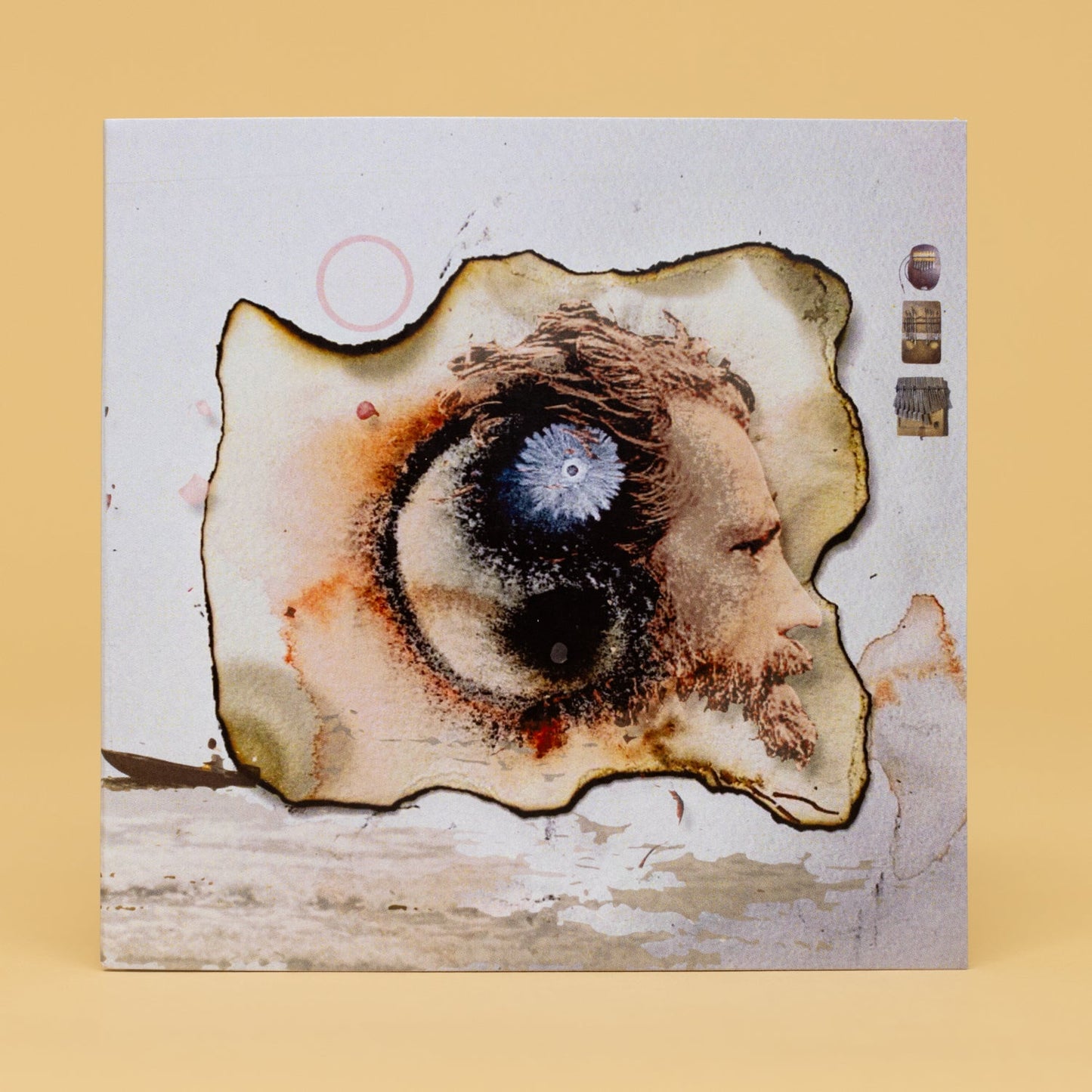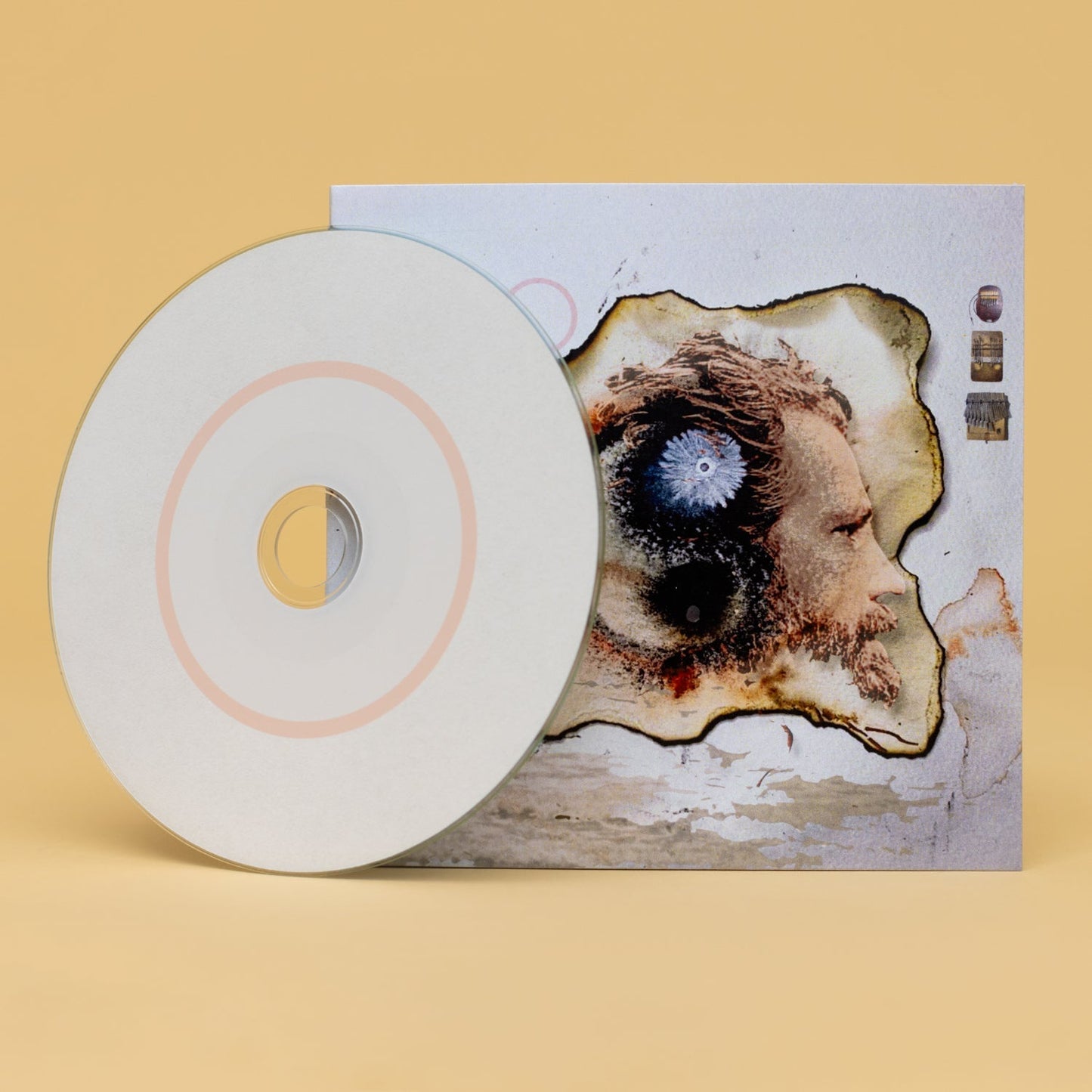Joe Westerlund - Elegies For The Drift (CD)
Joe Westerlund - Elegies For The Drift (CD)
Couldn't load pickup availability
Joe Westerlund was reluctant to record, shy about what he might just play. It was February 2022, and Westerlund—the lauded composer, improviser, bandleader, and session drummer for the likes of Califone, Watchhouse, and Bon Iver—had booked three days at Betty’s, the wooded studio haven of his occasional bandmates in Sylvan Esso. He had worked for a year on Elegies for the Drift, his second solo percussion album and a set of poignant pieces about a triumvirate of mentors who had recently died or were dying.
But he had one last idea, one more remembrance for his confidant and collaborator, Akron/Family’s Miles Cooper Seaton, who had passed in a car crash exactly a year earlier. Westerlund queued up samples of Seaton speaking during a local performance, plus the sound of a hailstorm he’d recorded 15 minutes after receiving that awful news. Sitting there alone in the studio, save for audio engineer Alli Rogers, he wondered exactly what he was doing, or if he could be so vulnerable around a near-stranger he’d hired for help. Finally, he closed his eyes, thought about what Seaton would do in such a situation, and played his feelings. The result— “The Circle,” seven minutes of wobbly bells and warped voices, coalescing into the kind of life-affirming astral drone that would make The Necks proud—is one of the most powerful and absorbing tributes to another human you will ever hear.
As its name suggests, Elegies for the Drift is indeed a collection of five instrumental remembrances for people, times, and chances Westerlund has lost. It keys on two of Westerlund’s musical lodestars: Seaton and Milford Graves, the free jazz iconoclast who drew the young drummer to Vermont’s Bennington College before becoming his lifelong guide until he died only a week before Seaton. It also owes to Aaron Efird, the father of Westerlund’s longtime partner, Carson, who died after an extended illness in April 2022.
Perhaps more important, though, Elegies is an exquisite index of the inspiration these people collectively offered Westerlund. Unapologetically opinionated and aggressively charismatic, Seaton, Graves, and Efird all gave the perennially polite native Midwesterner more courage to be himself, the very kind of confidence he’d need to pour out his emotions for the audience of an audio engineer. It is a wordless thank-you letter, a heartfelt transmission from a season of sadness.
For the last three years especially, so many of us have wrestled with notions of what we’re supposed to do with all this grief. That is, how do we use it? Timely, pacific, and vital, Elegies for the Drift shapes such grief into a kind of sanctuary, a healing place where we can sit with our feelings and then move forward with them.
Westerlund’s Elegies first stemmed from a spell of general, non-specific grief. Early into lockdowns, Carson co-founded a regular online meditation group, the participants finding new ways to share space and time. One regular always played soft music in the background; clipped, bent, and warped by the software, the sounds seemed to shower the group in spectral magic, incidental music that reassured everyone while reminding them of what they had lost. In turn, Westerlund began to process his own drums and metallophones, vocal hums and distended synths, creating a little chamber ensemble for one of once-familiar, now-disembodied sounds. There is a sweet sadness to the resulting “Transference,” the feeling that comes as you watch a frown slowly transform into a smile.
The bulk of Elegies, however, comes from very specific grief, captured almost in real time. Westerlund built “Prelude to Quietude” as a loving lullaby for his then-ailing father-in-law, Aaron, decorating the piece’s prancing meter with the mesmerizing glow of gamelan. Rhythms move in a half-dozen directions, a knowing pas de deux with death that also tries to outmaneuver it.
And just five months after Seaton and Graves died in February 2021, Westerlund visited Kinshasa, the bustling Congolese capital, to see his extended family and play with the legendary Kasai Allstars for an afternoon. Such a hardscrabble and intense city would have previously terrified Westerlund, but he conjured the power of Seaton and Graves, people who loved to square up to uncertainty, to face off with the unknown. “Carolina Yin” and “Kinshasa Yang” mine the tension between who we are and who we might be, moving from the former’s peaceful haze of mbiras and bells to the latter’s kinetic playground of balafons, cymbals, and electronics. These tandem works are testaments to slipping among seemingly oppositional frames of mind, to holding onto yourself while trying on something new, too.
It is almost shockingly easy to find points of inspiration in our times of ceaseless content churn. Turn on a podcast or sample from an infinite scroll of documentaries or television streams—we are all looking to find the redemption in someone else’s saga, to mine it like a precious stone for our own fuel. But it is endlessly harder to actually do something with such inspiration, to internalize the insights of someone else’s toil, trouble, and occasional triumph enough to make you a better thinker, artist, or person.
Elegies for the Drift is proof that it can happen. Yes, three of the most vibrant, vital, and often brash people Westerlund ever met are now gone. But their sparks remain clear inside these five wonders, whether in the playfully gilded rhythms of “Prelude to Quietude” or the exquisite and inquisitive expanse of “The Circle.” You hear Westerlund’s heroes, trace their guiding light. Westerlund has never sounded so confident or so searching, so sure of what he wants to say about three people who inspired him to say anything at all. Elegies for the Drift, in the end, is exactly what we can do with grief—make something beautiful, so we can keep going ourselves.
-Grayson Haver Currin




